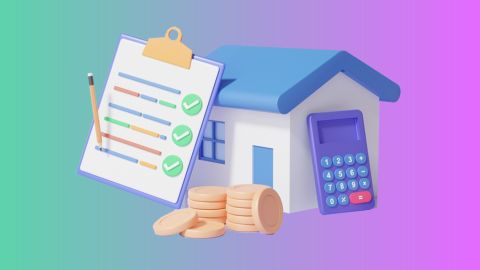What is DLC rate full form?
The full form of DLC Rate is District Level Committee Rate. The DLC rate is the minimum value used to calculate stamp duty for property transactions. DLC rate represents the lowest value at which land can be registered during the transfer of ownership. The stamp duty for a property transaction is calculated based on this rate. DLC rates vary depending on the type of property, including residential, commercial, and industrial properties.Understanding DLC rate and its importance
The DLC rate acts as a standardized property value set by government authorities. It serves multiple purposes:Calculating stamp duty: Stamp duty is based on the assigned DLC rate.
Loan eligibility: Financial institutions determine loan amounts and terms based on the DLC rate.
Transparency: It prevents underreporting of property values during sale or registration.
Whether you are buying property, applying for a mortgage loan, or selling real estate, knowing the DLC rate can guide financial planning and ensure fair and legal transactions.
How to find DLC rates online?
Finding the latest DLC rates has become easy with online portals. Here’s how you can check them:Visit the official state government portal: Most states in India have an official website for property registration.
Look for the DLC rate section: Search for "DLC Rate" or "Stamp Duty Calculator" on the website.
Enter property details: Input property location, type, and other necessary details.
View the assigned rate: The system will display the applicable DLC rate for your property.
Save or note the information: This rate will help you calculate costs during registration or loan applications.
This process ensures accurate property valuation, especially for a mortgage loan application or financial planning.
DLC rate in different states of India
DLC rates vary from state to state based on factors like location, demand, and urbanization. Here’s how they differ:| State | DLC rate (per sq. ft) |
| Uttar Pradesh | Rs. 2,000 – Rs. 5,000 |
| Maharashtra | Rs. 4,000 – Rs. 8,000 |
| Tamil Nadu | Rs. 2,500 – Rs. 7,000 |
| Karnataka | Rs. 3,000 – Rs. 6,000 |
| Andhra Pradesh | Rs. 2,000 – Rs. 5,500 |
| Gujarat | Rs. 3,500 – Rs. 9,000 |
These rates determine the tax amount and financial obligations for property registration and are important for anyone seeking a loan against property.
Impact of DLC rates on real estate transactions
DLC rates have a direct effect on real estate transactions. They impact:Stamp duty costs: These rates determine the stamp duty a buyer must pay during registration.
Loan eligibility: Financial institutions use these rates to evaluate loan eligibility for a mortgage loan.
Property taxes: Governments assess taxes using the DLC rate as a benchmark.
Understanding these rates can save buyers and sellers unnecessary expenses, especially when applying for loans or selling property.
Factors influencing DLC rates
Several factors determine the assigned DLC rates:Location of the property: Urban areas have higher rates than rural ones.
Demand and supply: High-demand areas see higher DLC rates.
Property type: Residential properties typically have different rates than agricultural or commercial ones.
Government infrastructure: Well-developed areas with better amenities have higher rates.
These factors are essential when planning a mortgage loan or property investment.
Misuses and challenges related to DLC rates
DLC rates can sometimes lead to challenges:Undervaluation: Some parties underreport property values to save on taxes or stamp duty.
Discrepancies: Market value often differs from the assigned DLC rate, causing disputes.
Fraudulent practices: Manipulation of rates to evade taxes.
Transparency and strict monitoring by government bodies are necessary to minimize these issues.
Steps to calculate stamp duty based on DLC rates
Stamp duty depends on DLC rates. Here’s how to calculate it:Identify the property’s DLC rate.
Check applicable stamp duty percentage: This varies by state.
Multiply the value with the percentage: Multiply the property value by the stamp duty rate.
Include additional costs (if any): Registration fees or other taxes might apply.
Following these steps ensures you calculate accurate costs, especially for financial transactions like a loan against property.
DLC rates vs Market value: Key differences
| Aspect | DLC Rate | Market Value |
| Definition | Government-assigned valuation rate | Actual market price of property |
| Stability | Fixed by government periodically | Can change daily or monthly |
| Usage | Used for registration and tax purposes | Depends on market demand and negotiations |




